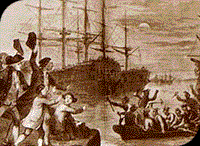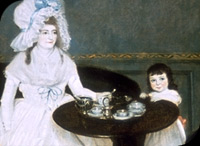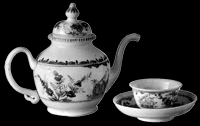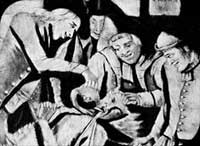Tea: Commodity & Symbol
In The Shoemaker and the Tea Party, Alfred Young argues that the Boston Tea Party was the "the most revolutionary act of the decade in Boston" and the "most carnivalesque event of the era." It succeeded in turning "the world upside down," in large part because it parodied the elaborate rituals and costly trappings of genteel tea drinking. Viewed in this way, dumping the tea in Boston harbor was for some a "way to channel class resentments." In contrast, T.H. Breen argues that tea "provides an instructive example of the standardization of consumer tastes." Americans colonials of all classes consumed tea, though not all drank out of china or silver teapots. And it was this pervasive, cross-class demand for tea throughout the 18th century that allowed colonists to unite so powerfully around resistance to the Tea Act.
As you look at the following images relating to 18th century tea drinking and the Tea Party, keep this historical debate in mind. What did the consumption of and resistance to tea mean to "ordinary" Americans across lines of class and gender?
• An
Elite Ritual
• Tea
for All?
• Americans
and the China Trade
• 19th
Century Tea Times
•
Leaves of Tea, an online exhibit on the history of tea
• The Stamp Act Crisis
• British Troops in Boston
• The Destruction of the Tea
• Tea: Symbol of Rebellion
• Tea: Symbol of Revolution



